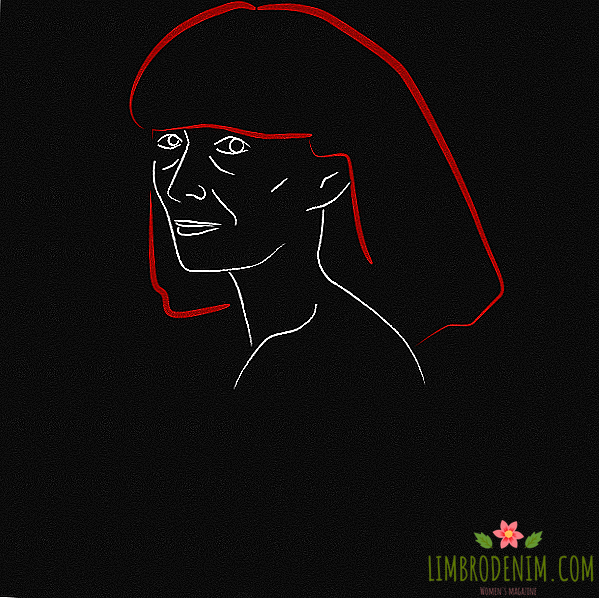What did the ban on abortion in different countries
At the beginning of the year in his address to the State Duma Patriarch Kirill made a proposal to exclude abortion from the compulsory health insurance system. And at the beginning of this week, he signed an appeal for a total ban on abortions in Russia, drawn up by the social movements For Life and Orthodox Volunteers. And so, while Russian Facebook is going crazy, and the productive couple M & M's, Mizulina & Milonov, one in the Federation Council, the other in the State Duma, are already rubbing their hands and getting ready to work, we decided to remember which countries had banned abortions and what it was led
There were many reasons for tightening legislation: from the desire to dramatically improve the demographic situation in South Korea and the USSR to the desire to achieve true morality in Ireland or post-revolutionary Iran. There were also a lot of consequences at the output: this is a difficult economic situation that many poor women have fallen into, and an increase in maternal mortality, and even the emergence of abortion tourism - traveling to other countries to have an abortion.

Protest in Krakow in April 2016 against the tightening of abortion legislation
Ban abortion as an economic tool
Elena Mizulina, while still a State Duma deputy, supported the words of the patriarch and proposed amendments to the legislation, among other things, implying the withdrawal of abortions from the CHI system. A similar amendment back in 1976 was adopted in the United States and named after its author, Republican Henry Hyde. The Hyde Amendment implied the exclusion of abortions from the public funding system, namely from Medicaid, the medical assistance program for the needy. As a result, this led to the fact that in many states, abortion has ceased to be the basic right of a woman, and has become a privilege that is available only to certain segments of the population.
According to the Gutmacher Institute, in recent decades, the problem of abortion has become the most acute for the poor. For example, in 2014, 75% of abortions were performed by patients with low income or income below the subsistence minimum. On the one hand, in 17 states, the Hyde Amendment is null and void, and additional legislation makes it possible to cover abortion costs from the state budget. But in these states, less than half of women receiving Medicaid assistance live. According to a research institute, 60% of women with incomes below the poverty line live in states where they cannot get an abortion free, except in special cases, such as rape or danger to the life of the mother. Many of them have to delay the moment of abortion itself in order to save money: they often have to sell property or save money on paying bills and buying food for their family.
Prohibition of abortion as a call for morality
In the early 1990s, after the Polish People's Republic fell, the conservative (read Catholic) political forces in Poland gained great influence. Accordingly, the moral views of religious communities began to slowly turn into state legislation. This led, among other things, to the criminalization of abortion in 1993. As a result, today Polish women can terminate a pregnancy only after the consent of two medical specialists confirming that there is a danger to the life of the mother, or that the fetus is damaged or the pregnancy was the result of violence.
After the conservatives won the parliamentary elections in 2015, the talk of tightening legislation was resumed. And the latest proposals to increase the prison term for doctors from two to five years and allow abortions only when there is a risk to the mother’s health caused a wave of demonstrations throughout the country. Representatives of public organizations launched a flash mob on social networks: people post pictures of them all dressed in black and put the #CzarnyProtest hashtag. On October 3, they are going to boycott work and study in order to express their disagreement with the suppression of women's rights.
But while the amendments are being considered by parliamentarians, and those who disagree are dressed in black, abortion tourism is increasing in Poland. According to the calculations of the Federation for Women's Rights and Family Planning, approximately one hundred thousand polleks annually make underground abortions or go to the neighboring countries of the European Union for this service. As noted in the official report of the Federation, due to the fact that women go to completely different countries, there are no accurate statistics on abortion tourism. The report cites the words of Dr. Janus Rudchinsky from a clinic on the German-Polish border, who claims that more than a thousand women come to him annually from all over Poland.
Banning abortion as a fight against the demographic crisis
Another argument that can often be heard in support of the ban on abortion is the struggle to improve the demographic situation in the country. Politicians in the Republic of Korea in the mid-50s and party leaders in the USSR in the late 1930s thought in such categories. When in 1936 the Communist Party imposed a ban on abortion, there were calls to think "not narrowly personal interests, but the life of the collective." But amid sharply rising birth rates, maternal mortality and infanticide rates also began to rise.
According to Victoria Sakevich, Associate Professor at the Institute of Demography of the Higher School of Economics, in four years since the adoption of the new law, the number of deaths from abortions has increased almost fivefold, and the proportion of murders of children under one year in the total number of registered murders has more than doubled. The system of clandestine abortions began to flourish: only 10% of abortions were initially performed for medical reasons, and the remaining 90% began to be performed outside a medical institution. Moreover, as Sakevich points out, in 1936, of those prosecuted for illegal abortions, only 23% were medical specialists, the rest were housewives and ordinary workers. As a result, the ban on abortion, which existed for almost twenty years, was recognized as a failed initiative and was lifted under Nikita Khrushchev.

↑ Protest in Washington, June 27, 2016
Ban abortions to help mothers
When in 1989, Augusto Pinochet completely banned abortions in Chile, his main argument was that medicine was at a high enough level and in order to save the life of the mother, it was not necessary to resort to abortion. Since the amendment to the legislation, all types of abortions in Chile have become illegal, including cases of sexual violence. Opponents of abortion often cite Chile’s example as a counter argument: they say it is often said that a ban on abortions leads to increased maternal mortality, but this is not the case - in Chile, death rates have only decreased. And it’s really so, it’s difficult to argue with the World Bank statistics: maternal mortality rates have fallen by half since the beginning of the 90s. But at the same time, only according to official statistics, 33 thousand women annually go to hospitals due to complications received during clandestine abortions. Actual performance may be much higher.
In early 2015, discussions about the need to legalize abortion resumed in connection with a series of videos produced by the public organization Miles. In the video, pregnant women give detailed instructions on how to get an abortion on their own, throwing themselves under a car or falling down the stairs. A year later, in March 2016, the lower house of Chilean parliament passed amendments to legislation allowing abortions in the event of sexual abuse, danger to the health of the mother or child. But in order for the amendments to take effect, they have to go through several more steps of confirmation.
Banning abortion as a political tool
In Brazil, abortions are permitted only for victims of sexual violence and if pregnancy threatens the life of the mother. But at the same time abortions are prohibited in cases when the fetus is deformed or it is known in advance that the child will have a disability. When the Zika virus began to rage in the country, leading to microcephaly in the fetus, in Brazil, the number of requests for medications that terminate the pregnancy increased. According to the organization Women on Waves, published in a joint article with the University of Texas, Oxford University and Princeton, from the beginning of 2015 in Brazil, the demand for such drugs has increased by 108%. The organization helps women around the world: conducts online consultations and mails pills to help end a pregnancy. But at some point, the organization had to stop sending to Brazil, because the postal and border guards simply began to withdraw them.
Another unexpected response to calls from the international community and human rights organizations to allow women to have an abortion in the event of illness and deformity of the fetus was, on the contrary, a proposal by members of parliament to tighten legislation. Parliamentarian Anderson Ferreira introduced a bill imposing tougher penalties for women who had an abortion because of Zika virus infection. Ferreira suggested in some cases to imprison women for up to 15 years. Explaining his decision, Ferreira referred to the growing feminist movement, which, in his opinion, decided to take advantage of the unstable situation and lobby for his own interests - the legalization of abortions.
Photo: Flickr, AP / East News (1)





